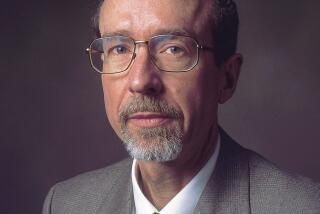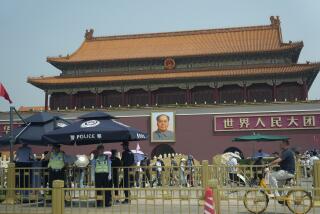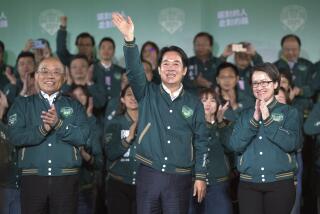‘Gate’ a Balanced Look at Tiananmen Square
In watching Richard Gordon and Carma Hinton’s superb three-hour documentary “The Gate of Heavenly Peace,” you have to wonder whether Mao Tse-tung would have created Beijing’s vast Tiananmen Square if he could have foretold the bloody massacre that would take place there on June 4, 1989, when armed tanks ended a seven-week, student-led demonstration calling for democracy.
For without a space capable of holding 1.5 million people, the students and their supporters might never have been able to mount their courageous stand for freedom of expression and economic justice.
The documentary’s title is the translation of “Tiananmen,” and it refers to the entrance of Beijing’s ancient Imperial City, the site where Chairman Mao and Premier Chou En-lai formally assumed power in the wake of the successful Communist revolution of 1949. The square carved out of the heart of Beijing by Mao routinely served--and continues to serve--as a public stage to proclaim Communist triumphs and mark key events with patriotic pomp.
Consequently, when former Communist Party General Secretary Hu Yaobang died on April 15, 1989, it was standard procedure for a funeral to be held for him a week later in the Great Hall of the People fronting one side of the square. But Hu, a reformer who had been deposed two years earlier, was a hero to students. They had been gathering at the square since the announcement of his death, first to memorialize him and then to air their grievances against the regime of Deng Xiaoping, whose profound economic reforms, they believed, did little to improve the lot of the masses.
Drawing from archival footage--surely the massacre, in the age of the camcorder, was the most fully recorded uprising in history--and interviews with its key leaders, Gordon and Hinton were able to bring alive a historic event that gradually took on the inevitability of classic tragedy.
*
While “The Gate of Heavenly Peace” is inescapably a record of opportunities missed in which extremists on both sides of the conflict ultimately prevailed, it also focuses on the often overlooked efforts of the moderates in government and in the demonstration to achieve a peaceful, positive resolution to the crisis. This is Gordon and Hinton’s most crucial contribution within their larger goal of presenting as scrupulous and comprehensive a record of the massacre as possible. (Gordon and Hinton are noted veterans in documenting life in China.)
The wisest heads in the protest argued that at certain moments a retreat from the square would have allowed the reformers in government to plead the students’ cause and also to stave off the massacre. But Chai Ling, the most emotional and fanatic of the student leaders, and those like-minded, prevailed, insisting that “only when the square is awash with blood will the people of China open their eyes.” (Although Chai appears frequently in news footage and in a lengthy interview conducted at the time of the tragedy, she refused to be interviewed for this film; she is said to live Boston.)
Surely, it’s too soon to say whether the students’ brave stand was all in vain. Yet it is significant that when “The Gate of Heavenly Peace” was shown at the New York Film Festival last fall, the Chinese government was sufficiently upset that it barred director Zhang Yimou from attending the festival, which was also presenting his actually quite politically correct “Shanghai Triad.”
* Unrated. Times guidelines: The film has real-life violence and is too brutal and demanding for children.
(BEGIN TEXT OF INFOBOX / INFOGRAPHIC)
‘The Gate of Heavenly Peace’
A NAATA (National Asian American Telecommunications Assn. presentation. Producers-directors Richard Gordon and Carma Hinton. Producers Peters Peter Kovler, Orville Schell and Lise Yasui. Writers Geremie Barme and John Crowley. Editor and associate director David Carnochan. Associate directors Barme and Gairl Hershatter. Editor Charles Phred Churchill. Cinematographer Richard Gordon. Music Mark Pevsner. Running time: 3 hours.
* Exclusively at the Grande 4-Plex, in the Sheraton Grande Hotel, 345 S. Figueroa St., downtown Los Angeles, (213) 617-0268. The film also will be shown June 4 on PBS’ “Frontline.”
More to Read
Only good movies
Get the Indie Focus newsletter, Mark Olsen's weekly guide to the world of cinema.
You may occasionally receive promotional content from the Los Angeles Times.









